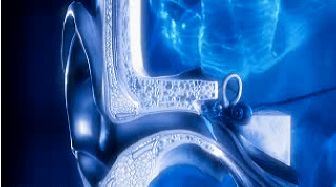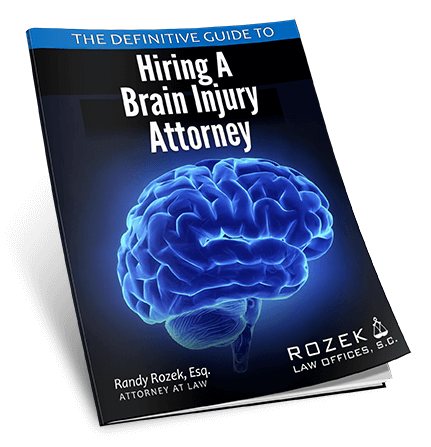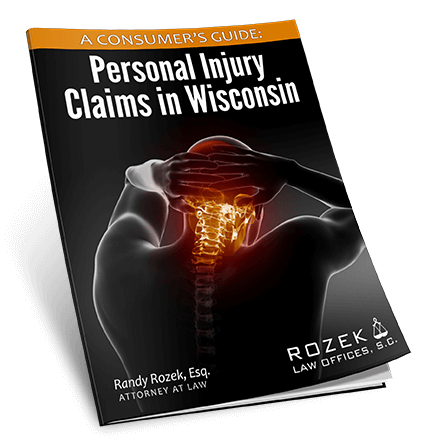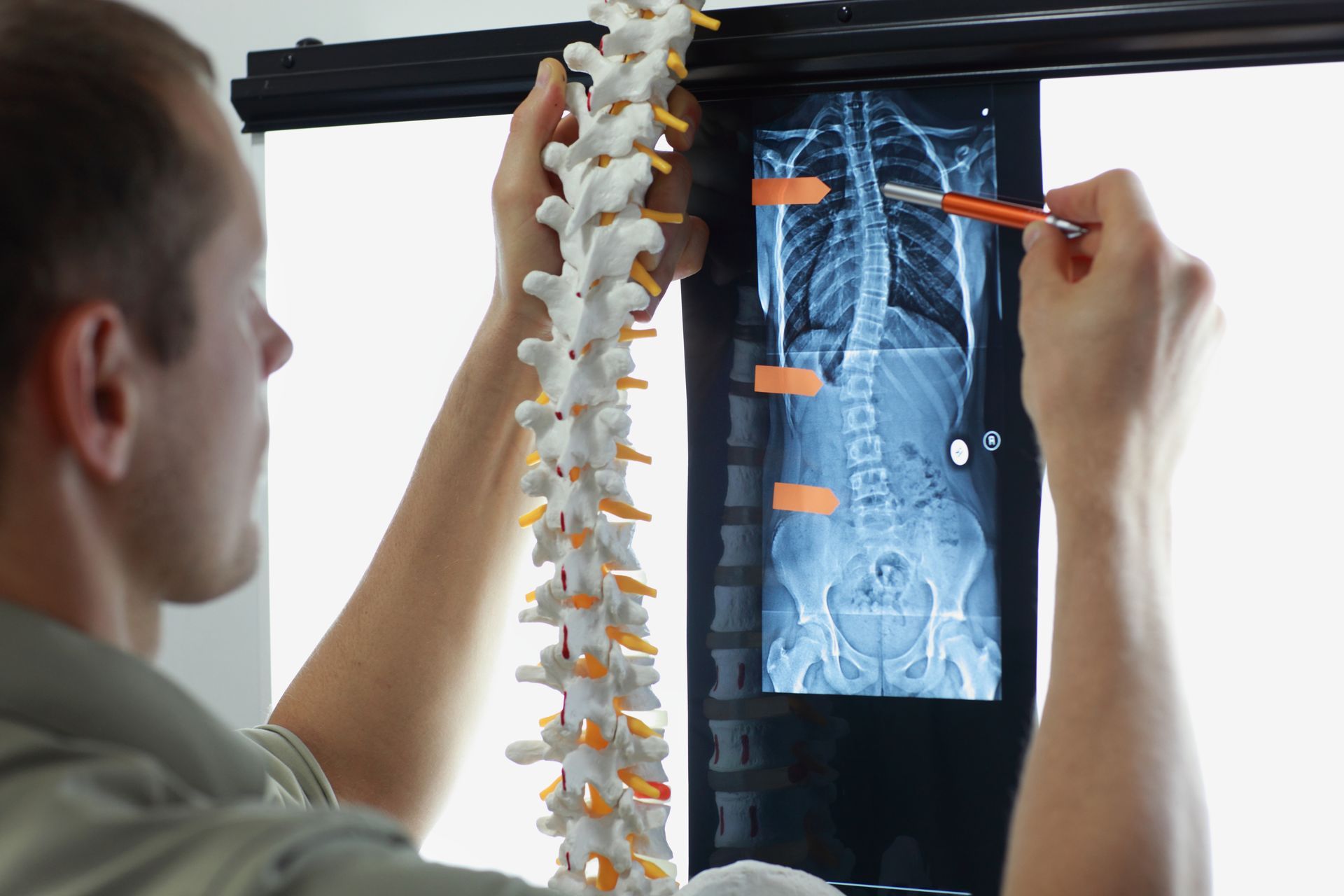Wisconsin Vestibular Disorders Attorney
FREE Vestibular Disorder Checklist
Vestibular Disorder Symptoms
can vary greatly and can include the following:
- Vertigo
- Dizziness
- Imbalance
- Motion Sickness
- Nausea
- Vomitting
- Ear Pain
- Increased Pressure in Ears
- Tinnitus
- Hearing Loss
- Slurred Speech
- Fatigue
- Sensitivity to Loud Noises
- Poor Depth Perception
- Difficulty Tracking Objects
- Visual Disturbance
- Difficulty Concentrating
- Forgetfulness
- Confusion and Disorientation
- Mental Fatigue
- Depression
The most common Vestibular Disorders
due to trauma are the following:
- Benign Paroxysmal Positional Vertigo (BPPV)
- Perilymph Fistula
- Vestibular Disorders and Traumatic Brain Injury
- Benign Paroxysmal Positional Vertigo (BPPV)
Benign Paroxysmal Positional Vertigo
or BPPV
is due to a collection of debris in the inner ear. The debris actually consists of tiny little crystals of calcium carbonate that are normally attached to the ends of small hair follicles that grow within the ear itself. The crystal debris is referred to as otoconia. The common term for these otoconia are “ear rocks.” Trauma can result in the ear rocks breaking off of the hair follicles and becoming lodged in the inner ear. The crystals attached to the hair follicles are responsible for sending the brain messages regarding balance and position. Once the ear rocks are lodged in the inner ear, they usually move around whenever the head moves. The ear rocks move within the ear canal, sending the brain incorrect information regarding balance and positioning. Trauma is the most common cause of BPPV in adults under 50.
Diagnosis of Benign Paroxysmal Positional Vertigo (BPPV)
Physicians, usually ENTs or Neuro-otologists, use the following tests for the diagnosis of BPPV:
- Dix-Hallpike Test
– patient sits with head turned 45 degrees to one side and extended about 20 degrees backwards, then lies down and the eyes are observed for 30 seconds. The patient returns to a sitting position and the eyes are again observed. The test is repeated with the patient’s head turned 45 degrees to the opposite side. The test is considered positive if the patients eyes “jump” (nystagmus) or possibly with vertigo complaints. Ideally, Frenzel Goggles
are used to monitor and actually video record the movement of the eyes during the test.
- Sidelying Test
– patient turns head 45 degrees to one side and lays down quickly onto their opposite side where the patients eyes are observed. The patient returns to sitting and again the eyes are observed. The test is repeated with the patient’s head turned 45 degrees to the opposite side. The test is considered positive if the patients eyes “jump” (nystagmus) or possibly with vertigo complaints. Again, ideally Frenzel Goggles
are used to monitor and actually video record the movement of the eyes during the test.
- Roll Test
– the patient lies with their head supported with 20 degrees of forward flexion and their head is moved rapidly 90 degrees to one side. The head is then moved slowly back to center. The test is repeated on the opposite side. The test is considered positive if the patients eyes “jump” (nystagmus) or possibly with vertigo complaints. Again, ideally Frenzel Goggles
are used to monitor and actually video record the movement of the eyes during the test.
Symptoms of Benign Paroxysmal Positional Vertigo (BPPV)
The Symptoms of BPPV can include the following:
- Vertigo
- Dizziness
- Loss of Balance
- Blurred Vision
- Unsteady Gait
- Nausea and/or Vomitting
Treatment of Benign Paroxysmal Positional Vertigo (BPPV)
Unfortunately, for patents with BPPV, the most common and effective treatments for their condition involve attempting to remove the “ear rocks” from the canal. This is accomplished by moving the head in various positions. The Epley Maneuver
and the Semont Maneuver
are the two most common types of movements that are utilized in the treatment of BPPV. Both usually result in extreme discomfort, nausea and dizziness for the patients. The good news is that they are about 80% effective in relieving the symptoms of BPPV. If they are not successful then patients may be given home exercises or physical therapy. Finally, if the patients are unable to relieve their symptoms, surgery to plug the canal where the “ear rocks” are lodged may be considered, however, there are several risks involved and the surgery is not widely medically acceptable for treatment of BPPV.
Perilymph Fistula
Perilymph Fistulas
are relatively rare. They are most commonly caused by direct trauma to the head or outer ear. A Perilymph Fistula
is an abnormal opening between the inner ear and the middle ear. The inner ear is normally filled with fluid, while the middle ear is normally filled with air. The only way to conclusively diagnose a Perilymph Fistula
is to perform a surgical procedure, a Tympanotomy, in order to actually identify the Fistula.
Symptoms of Perilymph Fistula
- Dizziness
- Hearing loss
- Tinnitus
- Sensitivity to Loud Noises
- Increased Pressure in the Ear
Treatment of Perilymph Fistula
It is possible that a Perilymph Fistula
will actually heal on its own with bed rest. If a Perilymph Fistula
does not heal itself with bed rest, and symptoms have not improved, then surgery may be necessary. There are a variety of surgical procedures used to treat a Perilymph Fistula.
Vestibular Disorders and Traumatic Brain Injury
It is important for individuals that have been diagnosed with a
Vestibular Disorder
due to trauma to be screened for
Traumatic Brain Injury (TBI). If an individual has been injured with enough force to cause a
Vestibular Disorder, then it follows that there was enough force to cause a
TBI.
Unfortunately, if an individual has been diagnosed with a
Vestibular Disorder
and a
TBI, the effects can be devastating on the individual. It is well understood that many of the
Symptoms of Mild Traumatic Brain Injury
can overlap with and exacerbate many of the Vestibular Disorder Symptoms.
At Rozek Law Offices, we have worked worked with some of the leading Vestibular Disorder experts in the United States and the world. If you or a loved one has sustained a
Vestibular Disorder,
Benign Paroxysmal Positional Vertigo
(BPPV), a
Perilymph Fistula
or a
Vestibular Disorder
and
Traumatic Brain Injury,
contact an experienced Wisconsin Vestibular Disorder Attorney












